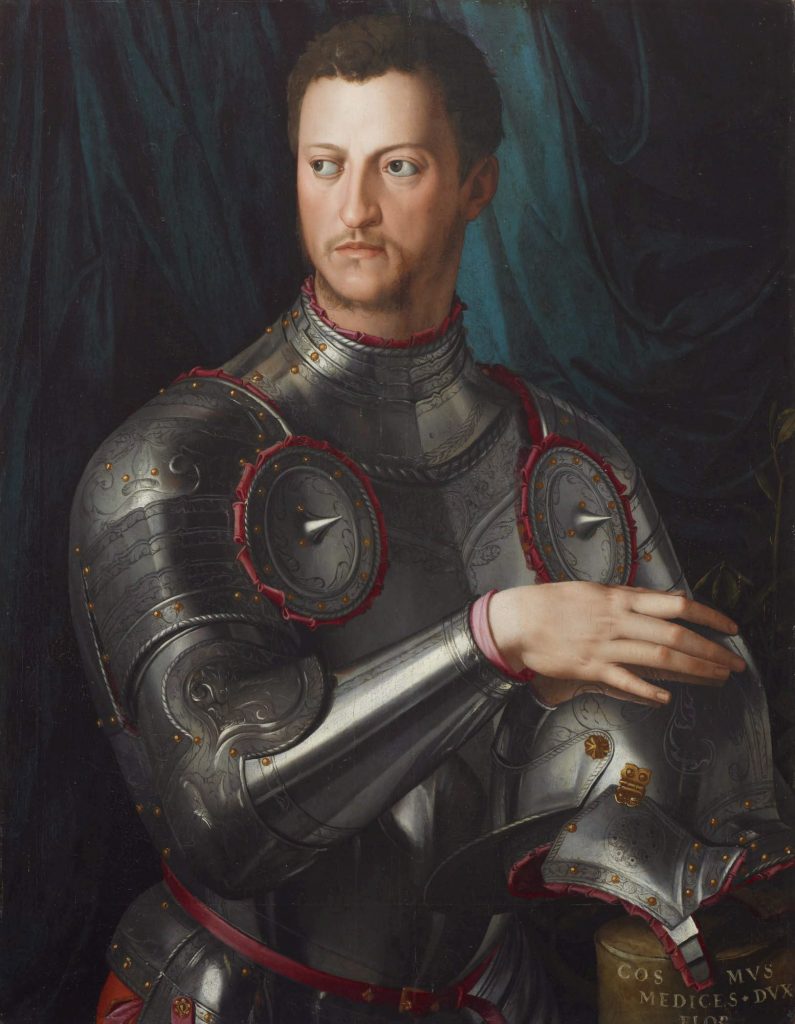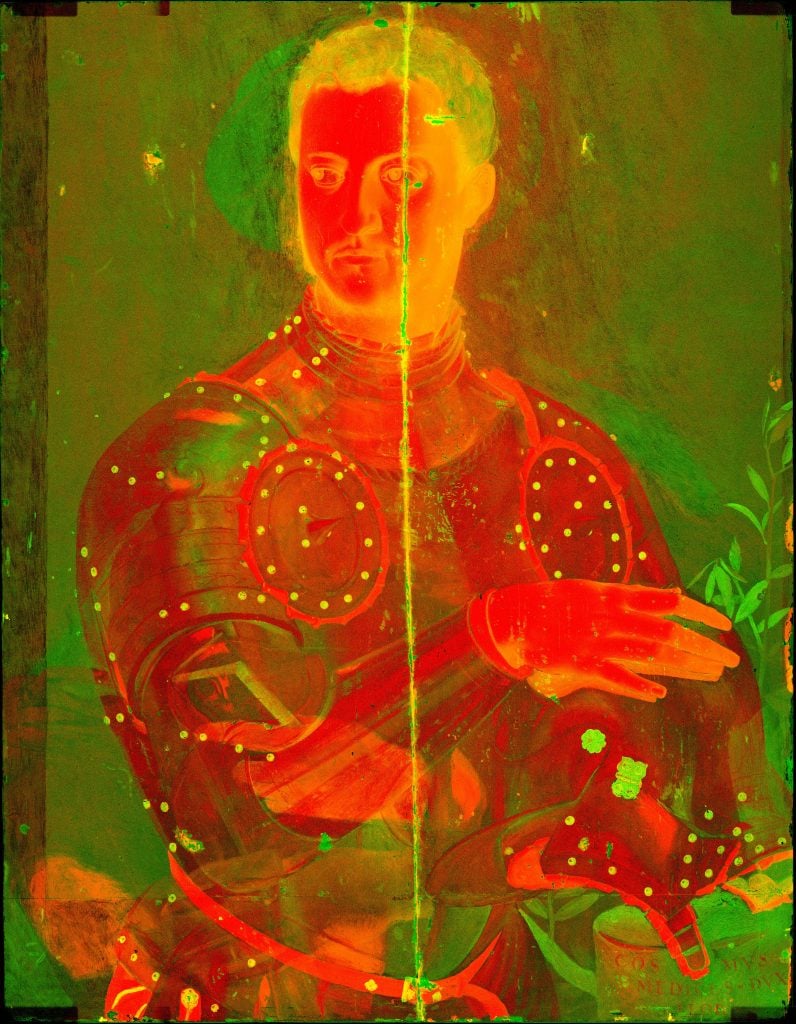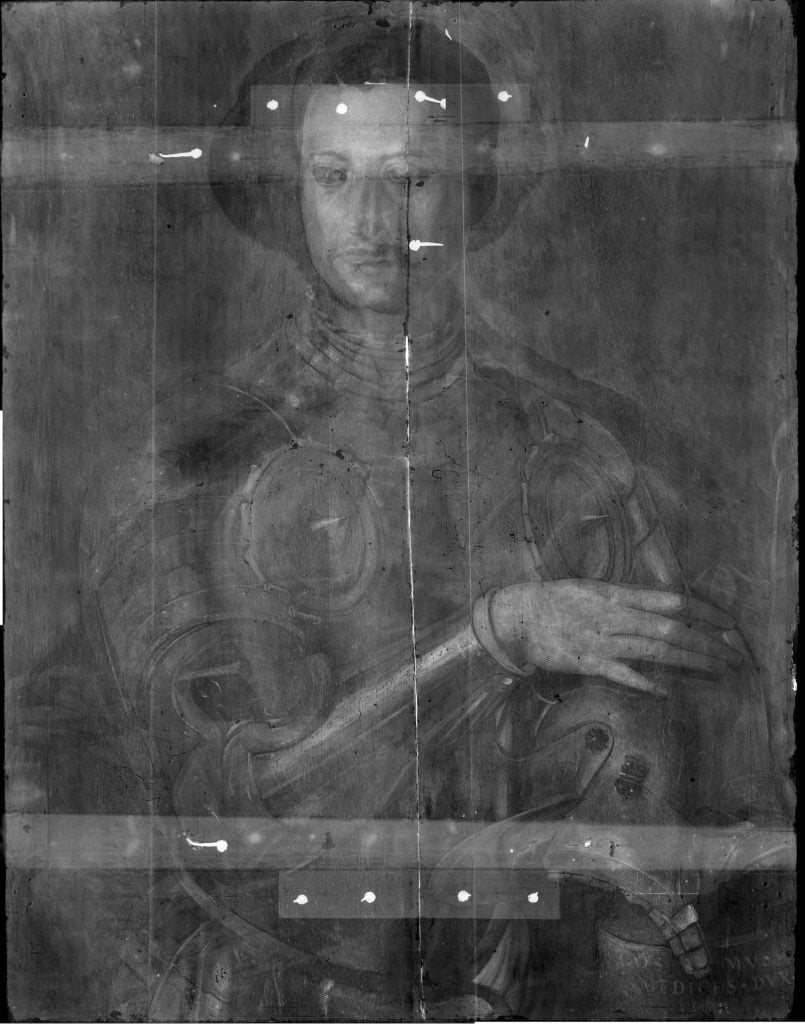Art History
An X-Ray Scan of a 16th-Century Bronzino Painting of Duke Cosimo de’ Medici Has Revealed a Mysterious Underlying Portrait
The painting, one of 25 versions, currently hangs in the Art Gallery of New South Wales.

The painting, one of 25 versions, currently hangs in the Art Gallery of New South Wales.

Richard Whiddington

By the mid-1540s, Cosimo de’ Medici had used military might and diplomatic savvy to reestablish Florence’s regional dominance. As a further seal of his authority, the Grand Duke of Tuscany had a portrait of himself commissioned by the era’s leading painter, Angnolo di Cosimo, better known as Bronzino.
The image of the virile duke dressed in immaculate armor with brilliant crimson trimmings, known as Cosimo I de’ Medici in armour (c. 1545), was replicated widely and has at least 25 versions, prompting longstanding debate about chronology and which was painted by the hand of the Italian Mannerist.
The one hanging in the Art Gallery of New South Wales recently further solidified its credentials as the prime autograph version—it was overwhelmingly painted by Bronzino, following an investigation using X-ray fluorescence (XRF) microscopy that reveals the work’s underpainting.

A composite XRF scan map of the Bronzino painting. Photo: Art Gallery of New South Wales.
The study was undertaken by the museum’s painting conservators, Simon Ives and Paula Dredge, and curator of international art Anne Gérard-Austin. Working with scientists from the Australian Nuclear Science and Technology Organisation, the team used a synchrotron particle accelerator and specialised Maia detector microscopy to scan the portrait. A full-length article exploring the findings was the cover story for the January edition of The Burlington Magazine.
“The synchrotron elemental maps enabled us to fully understand the sequences of paint application,” Ives told Artnet. “This essential information helped affirm the chronology and sequence of the Cosmo in armour series and confirmed it as the primary three-quarter length archetype, a fully autographic painting by the master.”
Renaissance artists worked with paints that contained minerals—tin in yellow, mercury in red, copper in deep blue—that advanced imaging can detect. The results revealed that Bronzino had originally depicted Cosimo de’ Medici as a scholar, one wearing a hat and holding a book.
The reasons for the shift in persona are unknown; perhaps the Duke wanted to present more as a fighter than a thinker, though notably without a weapon, an omission that scholars suggest pays deference to Charles V to whom he owed much of his political stability. The underpainting is believed to be the basis for a later work Portrait of a Young Man, now in Kansas City’s Nelson-Atkins Museum.

Digital X-radiograph of painting. Photo: Art Gallery of New South Wales, Paula Dredge.
The portrait, which had long been in private hands, emerged from obscurity in the early 1970s in part through the diligence of Robert Simon, an art historian who published a paper in 1983 that proposed the primacy of the painting and later published an X-ray image of the painting.
It is believed to be a three-quarter length version of a half-length work in the Uffizi Gallery and was purchased by the gallery’s foundation in 1996 for $1.88 and remains the only painting by Bronzino in an Australian collection.
More Trending Stories:
Considering a Job in the Art World? Here’s How Much Art Professionals Actually Make for a Living